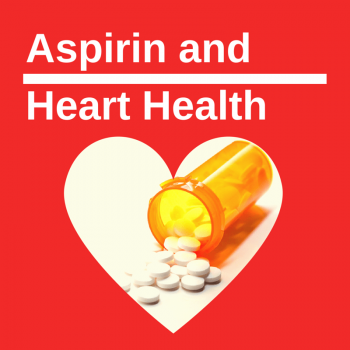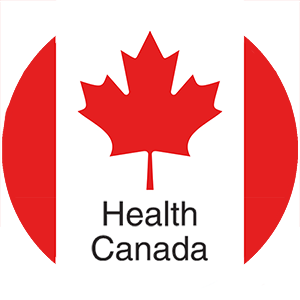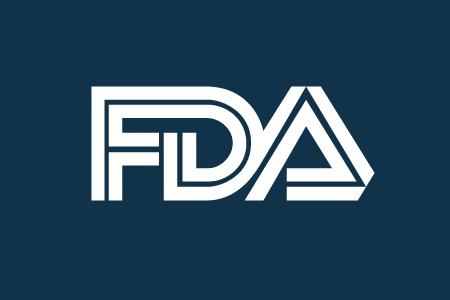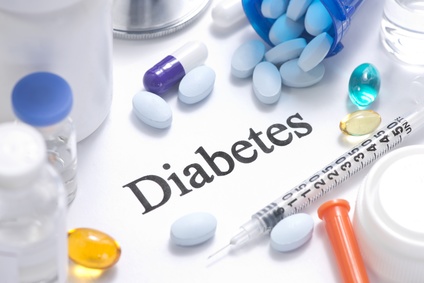Contributed by: Anuolu Bank-Oni, PharmD, CDE, BCGP
Acetylsalicylic acid (ASA) works by inhibiting platelet aggregation and has been the mainstay in reducing the risk of primary cardiovascular events, such as myocardial infarction and stroke. However, its role as primary preventative therapy has been scrutinized. To determine if ASA can be used in a patient, it is important to consider the patient’s cardiovascular risk, age, bleeding risk, and willingness to adhere to an ASA regimen. Adverse effects associated with acetylsalicylic acid include bleeding (gastrointestinal, cerebral), renal impairment, and gastrointestinal ulceration. Higher doses are associated with a higher risk of experiencing an adverse effect. Some research has shown that weight and gender may affect the efficacy of ASA therapy.
A meta-analysis1 of individual patient data conducted by Rothwell and his research team demonstrated that bodyweight may play a role in the efficacy of ASA. The analysis showed that ASA dosed between 75 mg and 100 mg may only reduce the risk of cardiovascular events in patients that weigh less than 70 kg. Patients who weigh more than 70 kg may require at least 300 mg of ASA to achieve a similar effect.
Some evidence also exists that indicates ASA efficacy may be affected by gender—in primary prevention, ASA reduces the risk of stroke in women but not in men; it reduces the risk of myocardial infarction in men but not in women.
Medication adherence is an important factor to consider in patients on ASA therapy. Discontinuing use of ASA (in the absence of major surgery or bleeding) may increase the risk of cardiovascular events2. Healthcare professionals should consider discontinuing ASA in patients with certain risk factors, who are scheduled for major surgery.
Listed below is a summary of some of the recommendations provided by various Clinical Practice Guidelines and research teams.
Current Recommendations
American College of Chest Physicians (ACCP)
The ACCP suggests ASA (75 mg to 100 mg daily) in patients aged 50 years and older without symptomatic cardiovascular disease. The guidelines state that ASA reduces total mortality in patients when taken for at least 10 years, regardless of their cardiovascular disease risk.
American Diabetes Association (ADA)
The ADA guidelines published in 2018 provide guidance on the use of ASA in patients with diabetes. Low-dose ASA (75 mg – 162 mg daily) may be used in primary prevention of cardiovascular events in patients with type 1 or type 2 diabetes with increased cardiovascular risk. This includes patients who are at least 50 years old, are not at increased risk of bleeding, and have at least one of the following risk factors: family history of premature atherosclerotic cardiovascular disease, hypertension, dyslipidaemia, smoking, or chronic kidney disease.
American Geriatrics Society (AGS)
The AGS Beers Criteria recommends avoiding the chronic use of daily doses of ASA greater than 325 mg in patients aged 65 years and older. If there are no suitable alternatives, consider using a gastroprotective medication to reduce the risk of gastrointestinal bleeds and peptic ulcer disease. The Beers Criteria recommends cautiously prescribing ASA for primary prevention of cardiovascular events in patients 80 years and older.
American Diabetes Association, American Heart Association & American College of Cardiology Foundation Joint Statement
In addition to the ADA guidelines already discussed, the joint statement suggests that low-dose ASA (75 mg – 162 mg daily) may be appropriate for patients with diabetes at intermediate cardiovascular risk (younger patients with at least one risk factor, or older patients with no risk factors, or patients with 10-year cardiovascular risk of 5–10%).
Cardiovascular risk should be evaluated using an assessment tool, such as the UKPDS Risk Engine, ARIC CHD Risk Calculator, or the ADA Risk Assessment Tool Diabetes PHD. Risk should be reassessed periodically, as risk factors may develop over time.
European Society of Cardiology (ESC)
The ESC recommends the use of ASA in primary prevention of cardiovascular events in men and women who have no increased risk of bleeding, and with a risk of major cardiovascular events (death, myocardial infarction, and stroke) of greater than 2 per 100 subject-years.
United States Preventive Services Task Force (USPSTF)3
The USPSTF guidelines recommend starting low-dose ASA in patients between the ages of 50 and 59 years who have at least a 10% 10-year risk of cardiovascular disease, are not at increased risk of bleeding, and have a life expectancy of at least 10 years. It is recommended for the prevention of cardiovascular events and colorectal cancer. To achieve benefit in colorectal cancer prevention, patients will need to take ASA for at least 5 to 10 years.
Although the optimal dose of ASA is not known, doses of 75 mg and 100 mg daily, and 100 mg and 325 mg every other day have been found to be effective. The risk of GI bleeds increases with dose and patients should be regularly assessed for adverse events.
Patients with hypertension4,5,8
The Cochrane review shows that ASA reduces myocardial infarction, increases major haemorrhage and minor bleeding, and has no significant effect on strokes. Due to the significant bleeding risk, ASA is not recommended in primary prevention of cardiovascular events in patients with hypertension. Time of ASA dosing may affect blood pressure in patients with hypertension. Some research has shown that administering ASA at bedtime may result in lower blood pressure in patients with mild essential hypertension.
Patients with low ankle brachial index9
A low ankle brachial index increases the risk of cardiovascular and cerebrovascular events. Aspirin therapy may not reduce the risk of cardiovascular events in patients with a low ankle brachial index. More research is needed in this patient population to determine the role ASA may play in the management of cardiovascular disease.
Conclusion
The current guidelines indicate that although acetylsalicylic acid may reduce the risk of cardiovascular events, there is an increased bleeding risk. ASA may not be beneficial in patients below the age of 50 and over the age of 70. Each case should be assessed individually to determine appropriateness.
An optimal dose and frequency of administration have not been established. However, it is prudent to use the lowest effective dose to minimize the risk of adverse events. ASA has been shown to be beneficial in secondary prevention of cardiovascular events. Its role in the primary prevention of cardiovascular events has been controversial and requires additional research.
About the author
Anuolu Bank-Oni is the principal medical writer and consultant of Pharmέcrit. A graduate from the University at Buffalo, SUNY, NY with a Doctor of Pharmacy degree, she is also a Certified Diabetes Educator and a Board-Certified Geriatric Pharmacist. Anuolu has a combined experience of over ten years in pharmacy practice in US and Canada and her clinical experience includes mentoring, facilitating, and training of healthcare professionals. She effectively combines her therapeutic expertise with her ability to clearly and accurately convey complex scientific information to a target audience, such as patients, general public, healthcare professionals, and regulators
References
- Rothwell PM, et al. Effects of aspirin on risks of vascular events and cancer according to body weight and dose: analysis of individual patient data from randomised trials. Lancet. 2018 Aug 4;392(10145):387-399. doi: 10.1016/S0140-6736(18)31133-4. Epub 2018 Jul 17
- Sundstrom, J et al. Low-Dose Aspirin Discontinuation and Risk of Cardiovascular Events: A Swedish Nationwide, Population-Based Cohort Study. 2017 Sep 26;136(13):1183-1192. doi: 10.1161/CIRCULATIONAHA.117.02832
- Bibbins-Domingo, K. Aspirin Use for the Primary Prevention of Cardiovascular Disease and Colorectal Cancer: U.S. Preventive Services Task Force Recommendation Statement. Ann Intern Med. 2016;164:836-845. doi:10.7326/M16-0577
- Lip GY, et al. Antiplatelet agents and anticoagulants for hypertension. Cochrane Database Syst Rev. 2011 Dec 7;(12):CD003186. doi:10.1002/14651858.CD003186.pub3.
- Griffin, G. Antiplatelet therapy and anticoagulation in patients with hypertension. Am Fam Physician. 2005 Mar 1;71(5):897-9.
- Cardiovascular Disease and Risk Management: Standards of Medical Care in Diabetes-2018. Diabetes Care.2018 Jan;41(Suppl 1):S86-S104. doi: 10.2337/dc18-S009.
- DynaMed Plus [Internet]. Ipswich (MA): EBSCO Information Services. 1995 – . Record No. 114918, Aspirin for primary prevention of cardiovascular disease; [Cited 2019 March 28]. Available from http://www.dynamed.com/login.aspx?direct=true&site=DynaMed&id=114918. Registration and login required
- Hermida RC, et al. Aspirin administered at bedtime, but not on awakening, has an effect on ambulatory blood pressure in hypertensive patients. J Am Coll Cardiol. 2005 Sep 20;46(6):975-83.
- Fowkes FG, et al. Aspirin for prevention of cardiovascular events in a general population screened for a low ankle brachial index: a randomized controlled trial. 2010 Mar 3;303(9):841-8. doi: 10.1001/jama.2010.221.
- Halvorsen S, et al. Aspirin therapy in primary cardiovascular disease prevention: a position paper of the European Society of Cardiology working group on thrombosis. J Am Coll Cardiol. 2014 Jul 22;64(3):319-27. doi: 10.1016/j.jacc.2014.03.049.
- Vandvik PO, et al. Primary and secondary prevention of cardiovascular disease: Antithrombotic Therapy and Prevention of Thrombosis, 9th ed: American College of Chest Physicians Evidence-Based Clinical Practice Guidelines. 2012 Feb;141(2 Suppl):e637S-e668S. doi: 10.1378/chest.11-2306.
- Fick DM, et al. American Geriatrics Society 2015 Updated Beers Criteria for Potentially Inappropriate Medication Use in Older Adults. J Am Geriatr Soc.2015 Nov;63(11):2227-46. doi: 10.1111/jgs.13702. Epub 2015 Oct 8.
- Pignone M, et al. Aspirin for primary prevention of cardiovascular events in people with diabetes: a position statement of the American Diabetes Association, a scientific statement of the American Heart Association, and an expert consensus document of the American College of Cardiology Foundation. Diabetes Care. 2010 Jun;33(6):1395-402. doi: 10.2337/dc10-0555.
- Aspirin_PI [Internet]. [Cited 2019 March 28]. Available From: https://www.bayer.ca/omr/online/aspirin-pm-en.pdf










